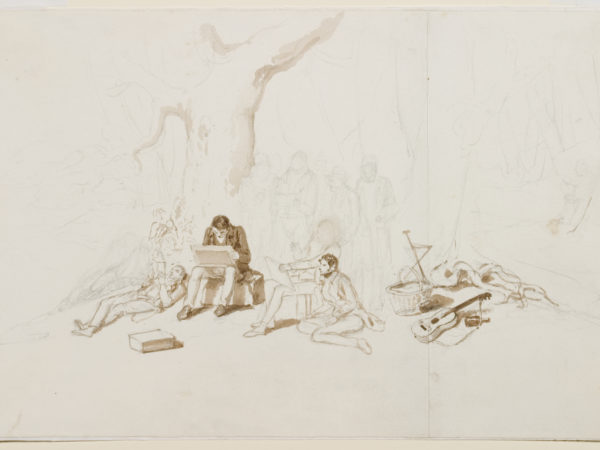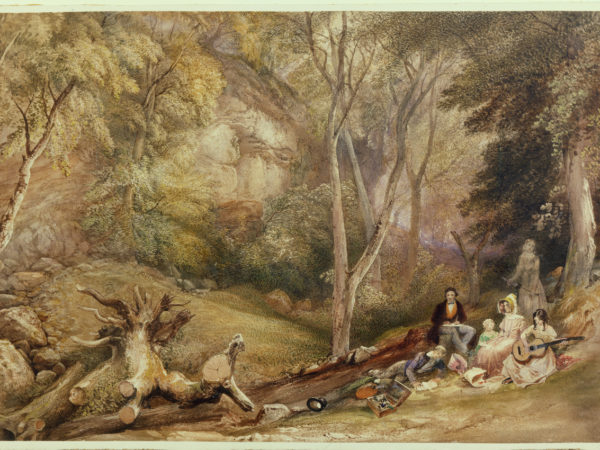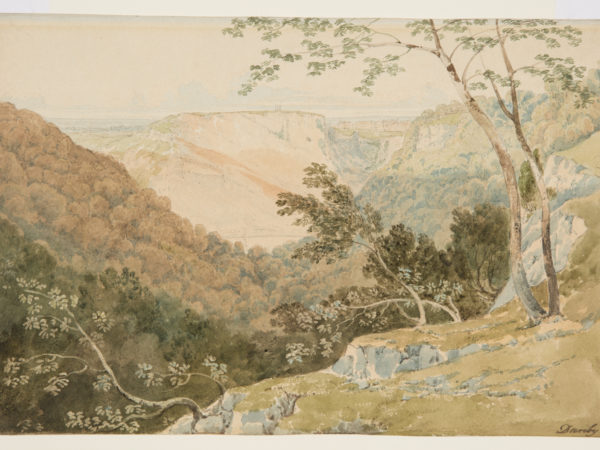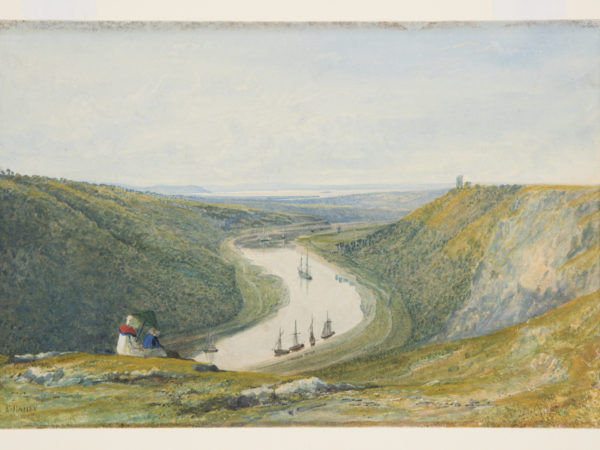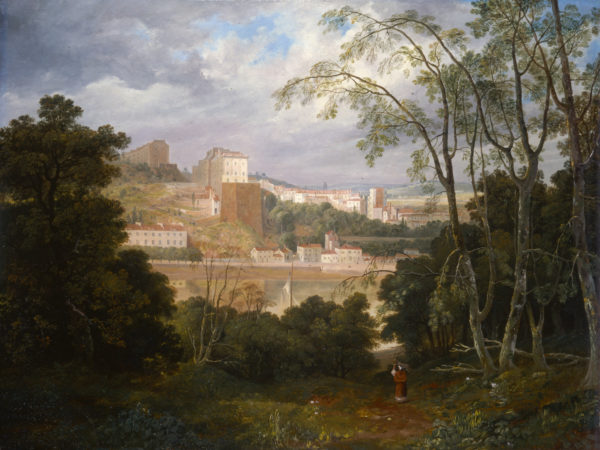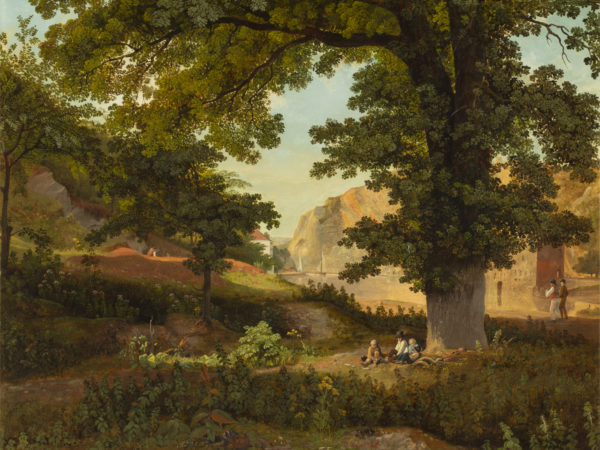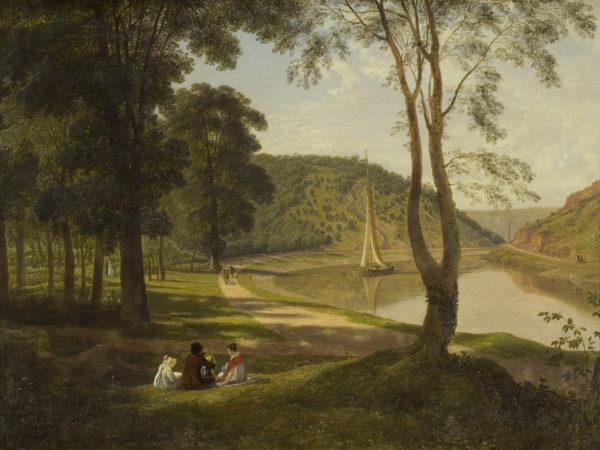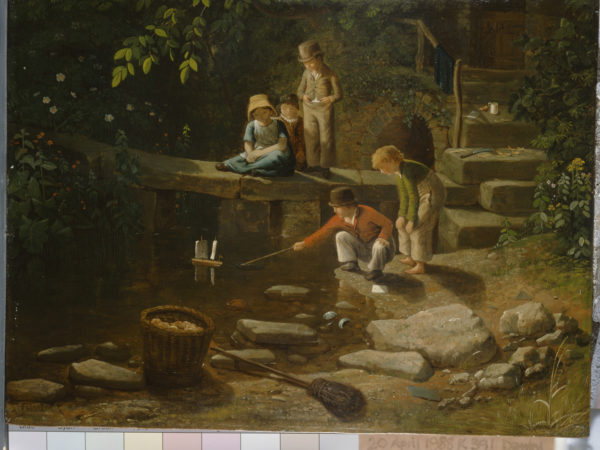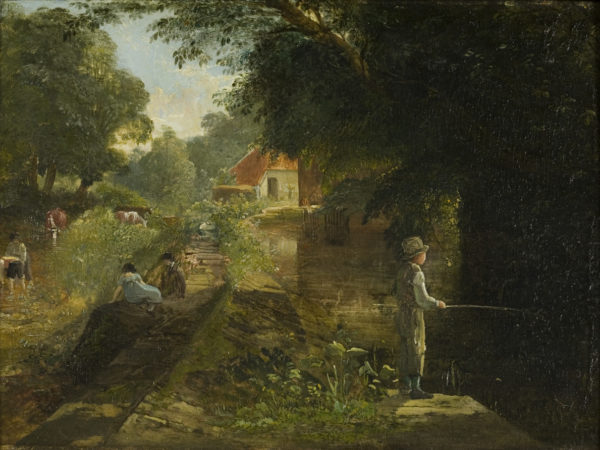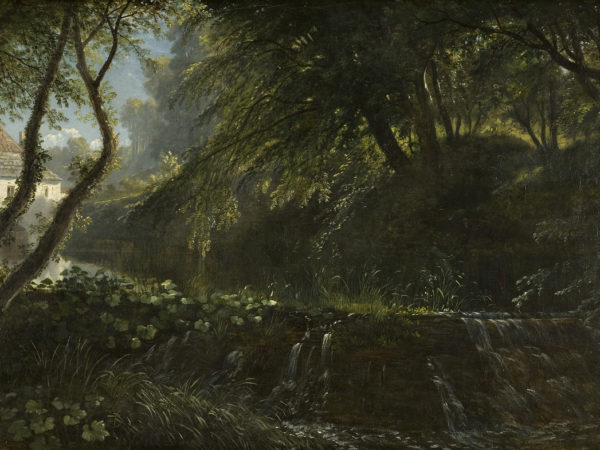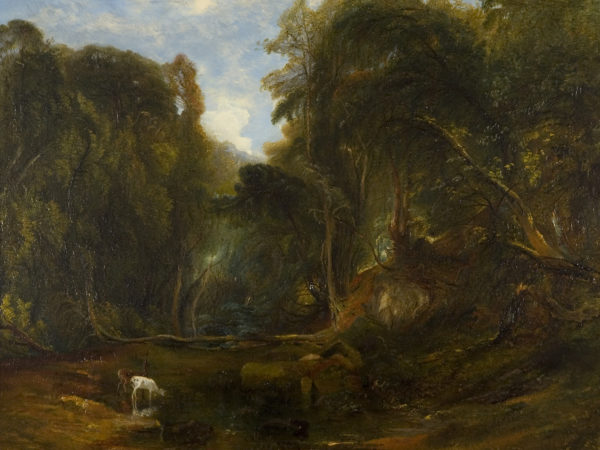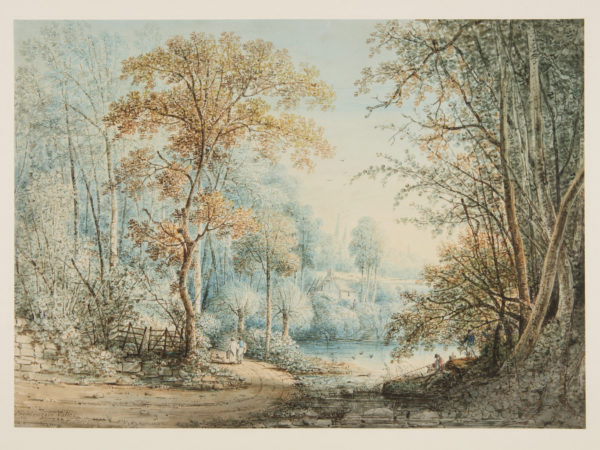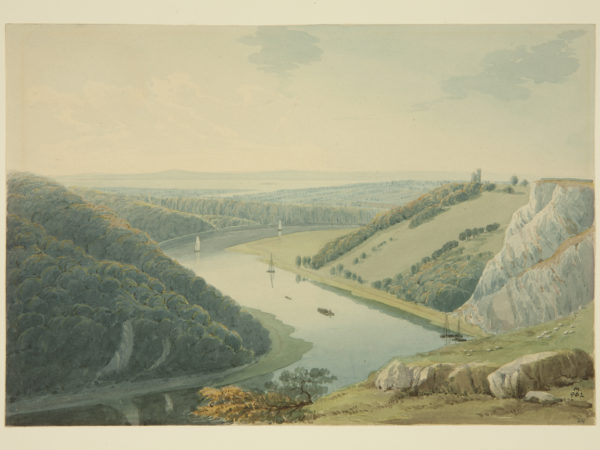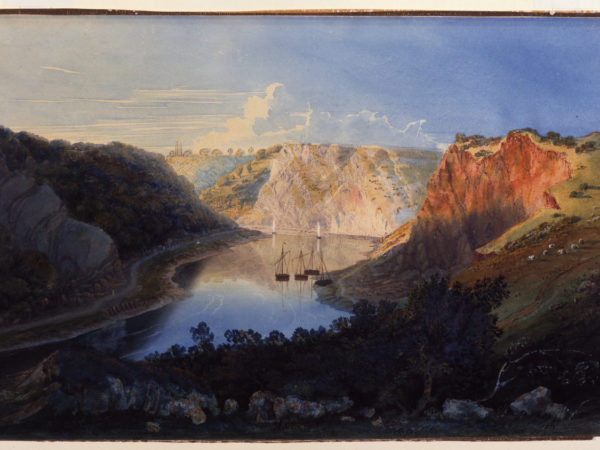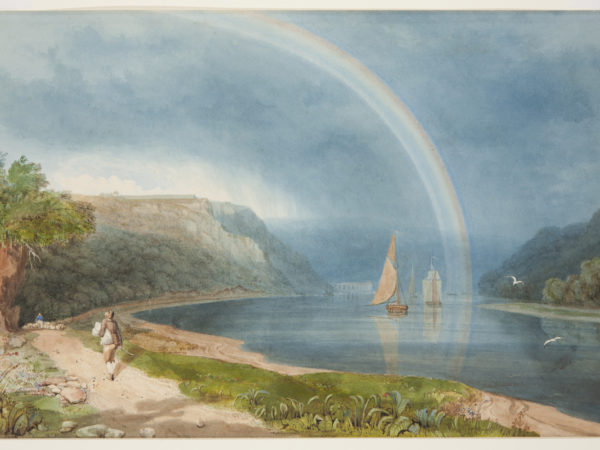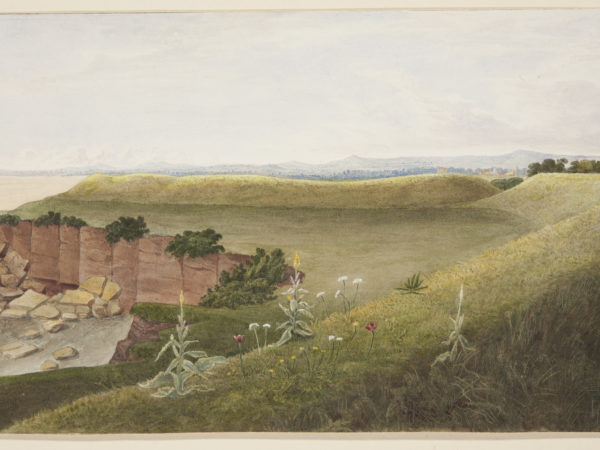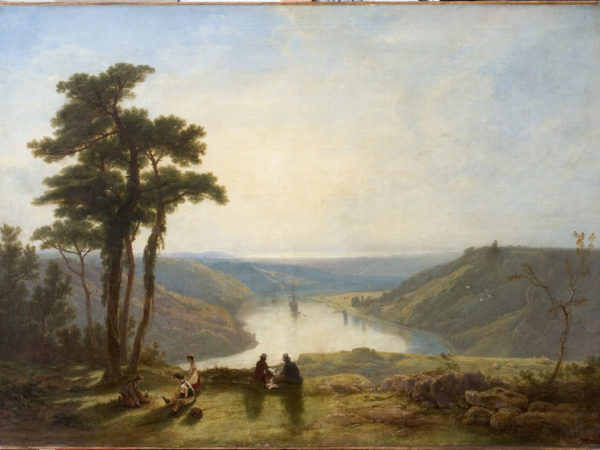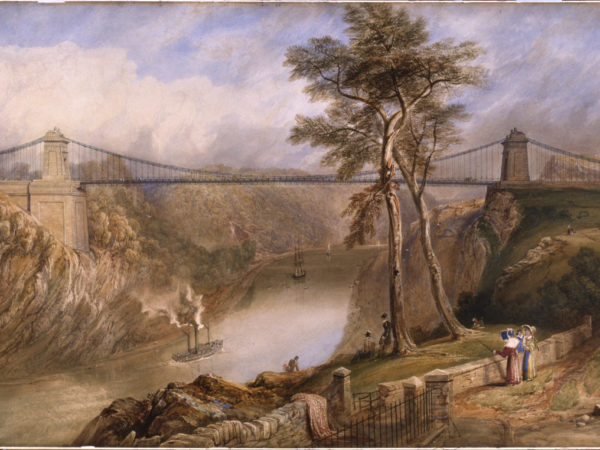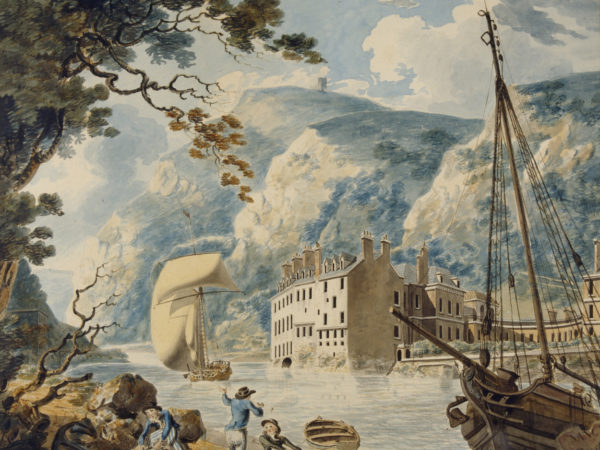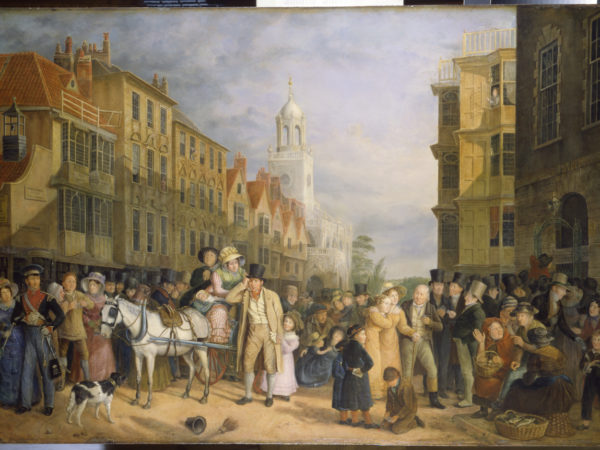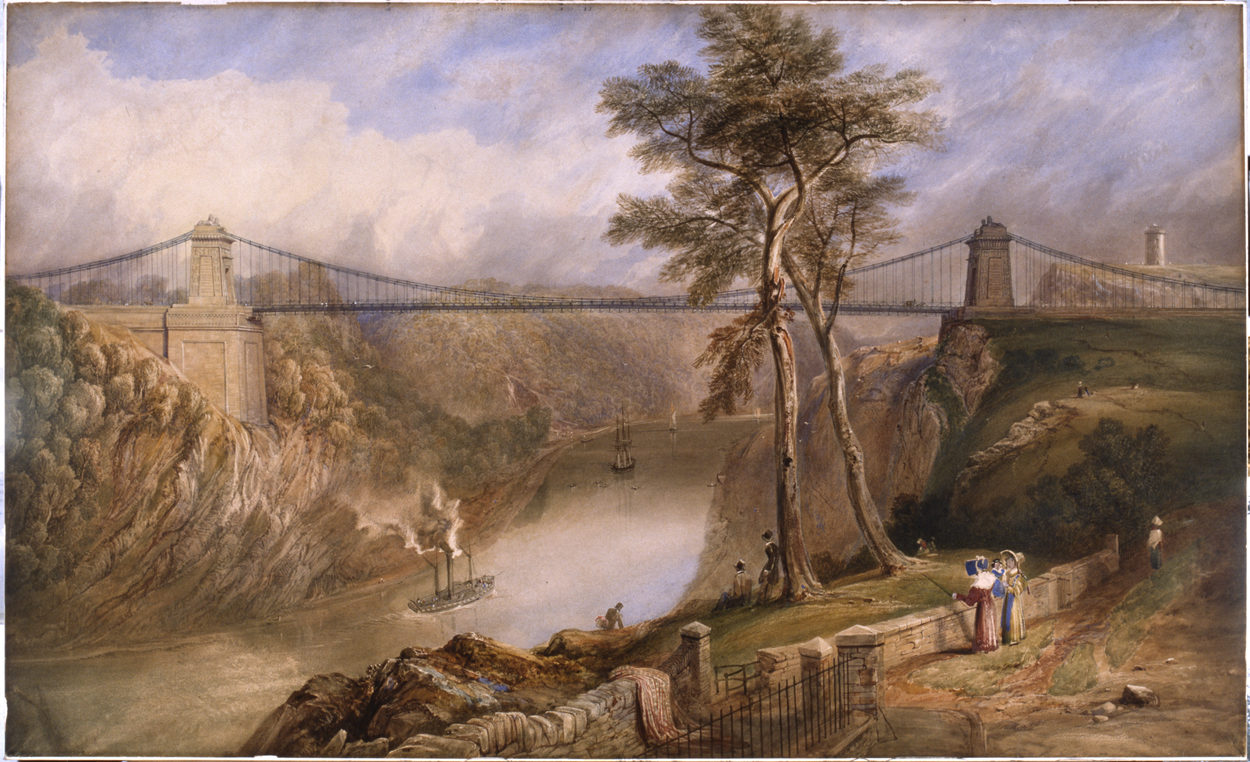
Absolutely Nature: A “sketching party”, or the pleasure of drawing in the open air... and in good company
In the 1810s, artists, patrons, poets and hobbyists gathered regularly around the painter Edward Bird. These jolly meetings would discuss society, politics and, above all, aesthetics. They were an opportunity to draw, especially at sessions held out of doors (en plein air), in the picturesque countryside around Bristol.
Destinations included Leigh Woods, Nightingale Valley and the River Frome at Stapleton. Fascinated by natural sciences and geology, the artists brought a new perspective to the rich plant life of the woods and the curious rock formations of the Avon Gorges. Like Francis Danby or Samuel Jackson, they painted in watercolour.
Some examples of their virtuosity in the medium are displayed here. Plain air sketches formed the basis of larger paintings, worked up in oil paint back at the artist’s studio. Francis Danby’s works bear witness to his sharp observation and his desire to reflect nature as faithfully as possible.

Edward Villiers Rippingille, A Sketching Party in Leigh Woods, about 1828, sepia drawing, K3078/30
Created with a few sepia strokes, this unfinished drawing comes from an album of drawings by the Bristol School artists. Here, Rippingille depicts one of the famous sketching parties, the group’s favourite and emblematic activity. Under a tree in Leigh Woods, on the edge of the Avon Gorge, a small group of men devote themselves to various activities: some are sketching while others are reading. The presence, on the right, of a guitar and a picnic basket demonstrates the festive and friendly nature of these open air excursions. View full image.
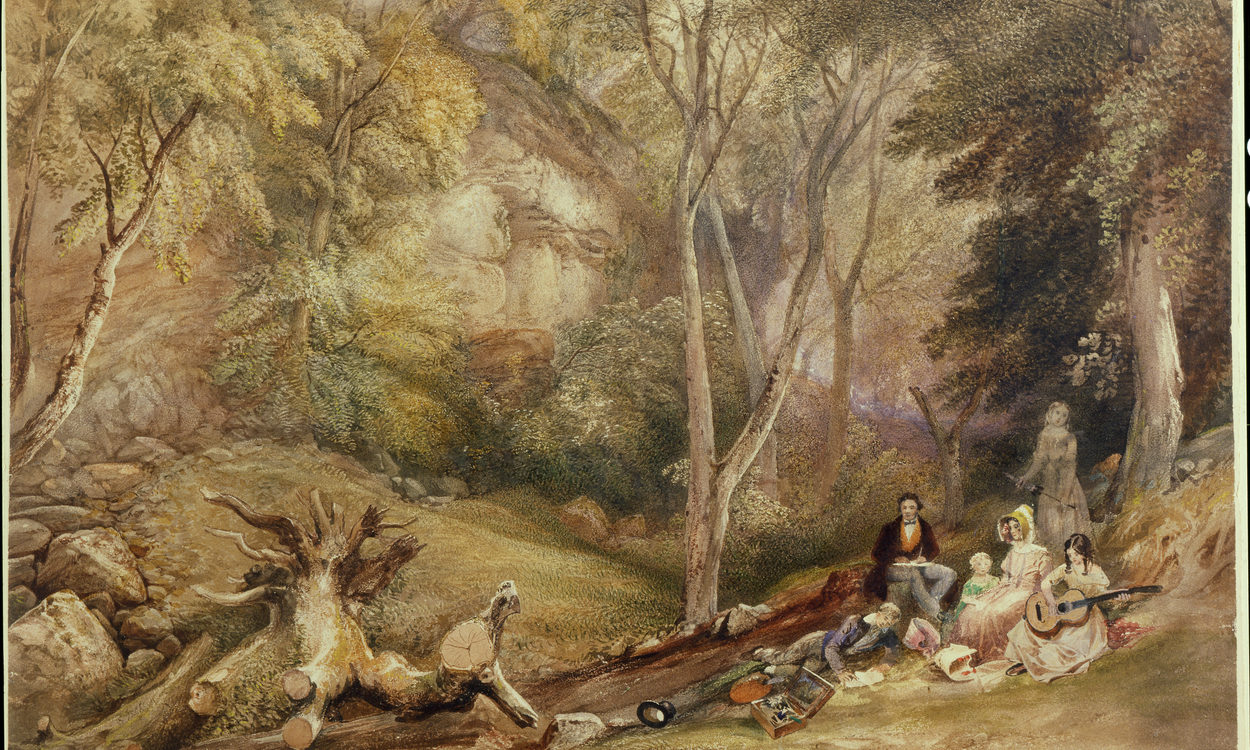
Samuel Jackson, A Sketching Party in Leigh Woods, about 1830, watercolour, K2761
Like his friend Danby, Jackson enjoyed the sketching parties, which he helped to revive at the start of the 1830s. Called the “land of poetry and enchantment” by the Reverend John Eagles, Leigh Woods provided the perfect setting for these group and family sketching trips. The artist focuses on this wild and mysterious landscape, detailing every tree stump and rock. A group of figures is shown off-centre to the right, providing a splash of colour in the largely monochrome scene. We see two men reading and drawing, with their paints and brushes at their feet, a woman and three young girls, one of whom is playing the guitar. View full image.
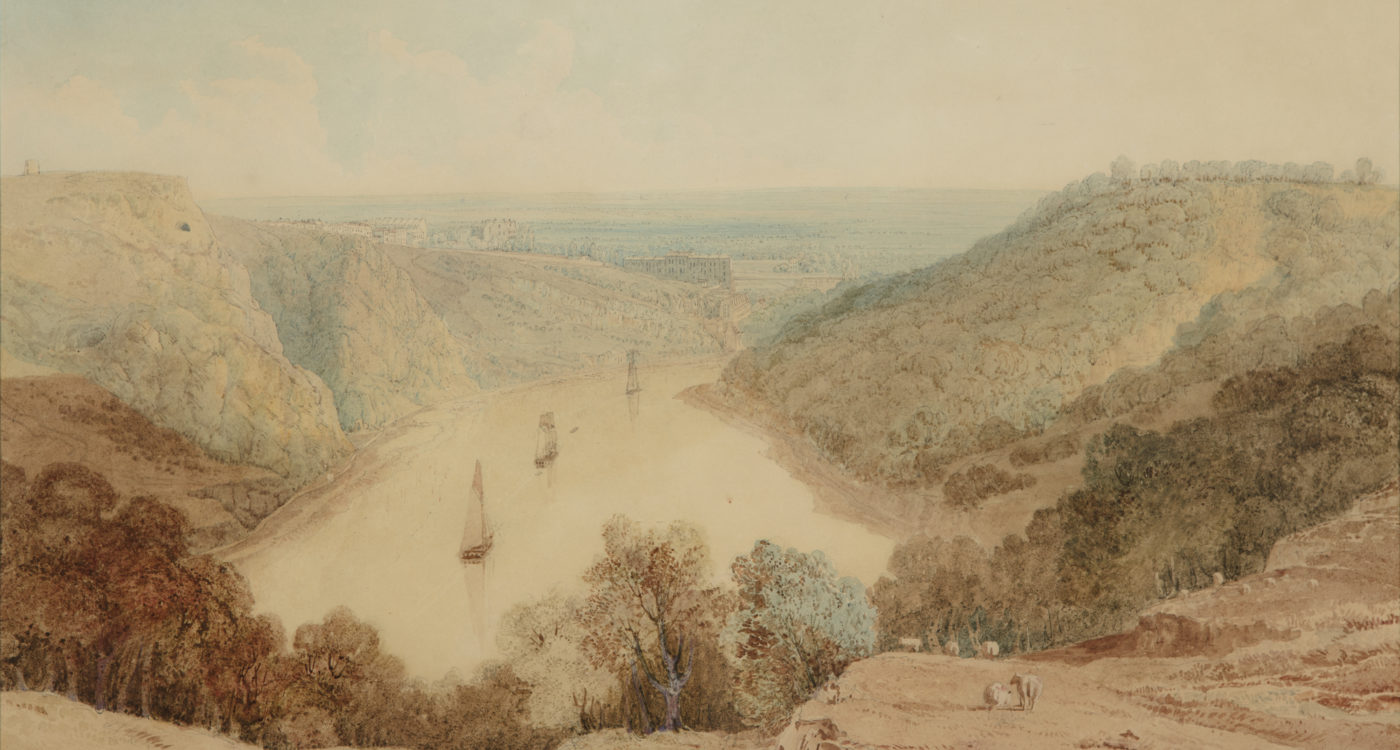
Francis Danby, The Avon Gorge from near Sea Walls looking towards Clifton, about 1815/20, watercolour, K5811 View full image.
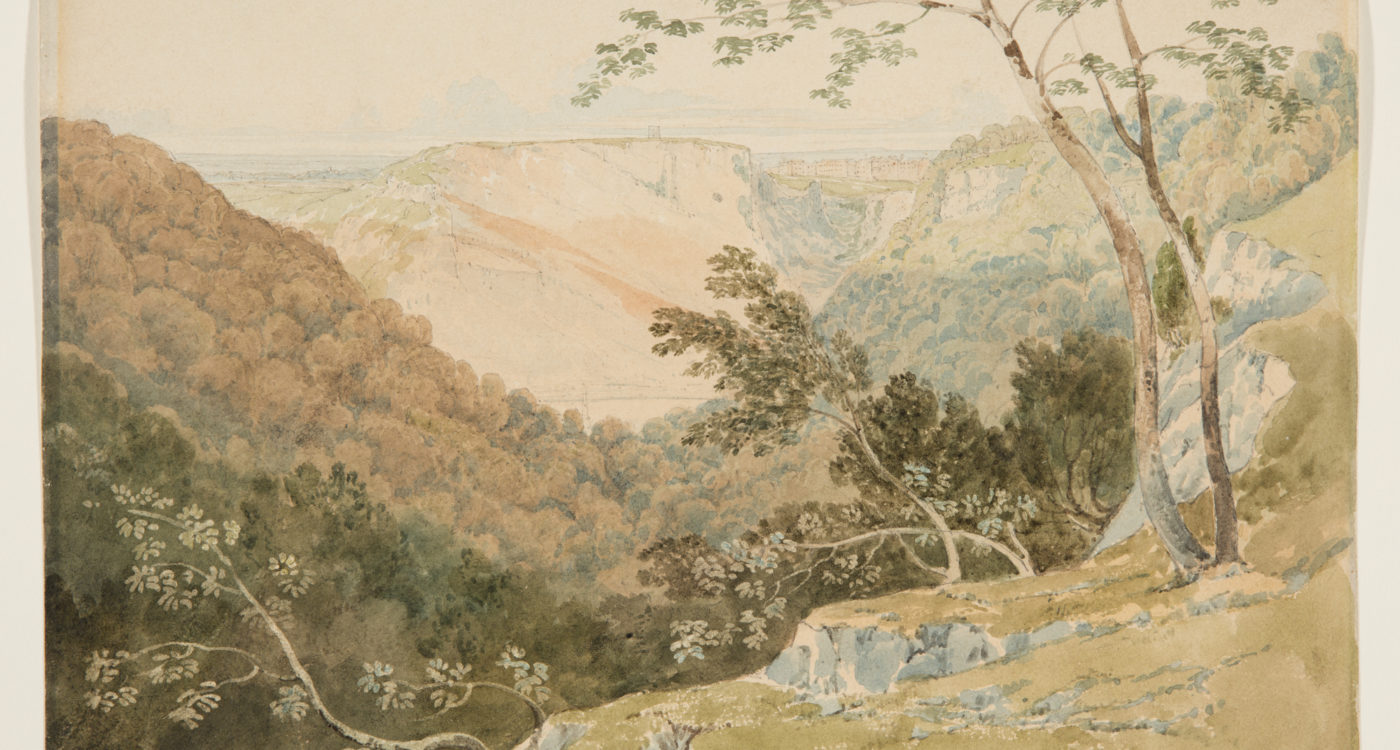
Francis Danby, St Vincent’s Rocks from above Nightingale Valley, about 1819, watercolour, K5119. View full image.

Francis Danby, The Avon from Durdham Down, about 1821, watercolour, K4659
Like other Bristol School artists, Francis Danby painted numerous panoramic views of Bristol. The delightful setting was an inexhaustible source of inspiration for him. The Sea Walls area at the southern tip of Durdham Down near Clifton, was one of the most spectacular sites in the city. Framed by limestone cliffs and the green expanse of Leigh Woods, the River Avon meanders past in an elegant curve, carrying a few ships. The harmony of blues and greens is barely disrupted by the red splash of the shawl worn by the young woman sitting on the edge of the promontory. She is gazing, in a romantic attitude, at the sublime nature.
View full image.

Francis Danby, The Frome at Stapleton, about 1821/23, watercolour, K195
During his time in Bristol, from 1810 to 1824, Francis Danby regularly visited the banks of the River Frome, a tributary of the Avon. Located 6.5 km to the east of the centre of Bristol, the village of Stapleton was a particularly popular site with artists. Its picturesque charm and quiet atmosphere made it the perfect place for fishing and contemplation. The medium of watercolour lent itself perfectly to the subtle variations in the green foliage. The scene is illuminated by the white earth of the small bridge at Wickham and the red splash of the silhouette in the background.
View full image.
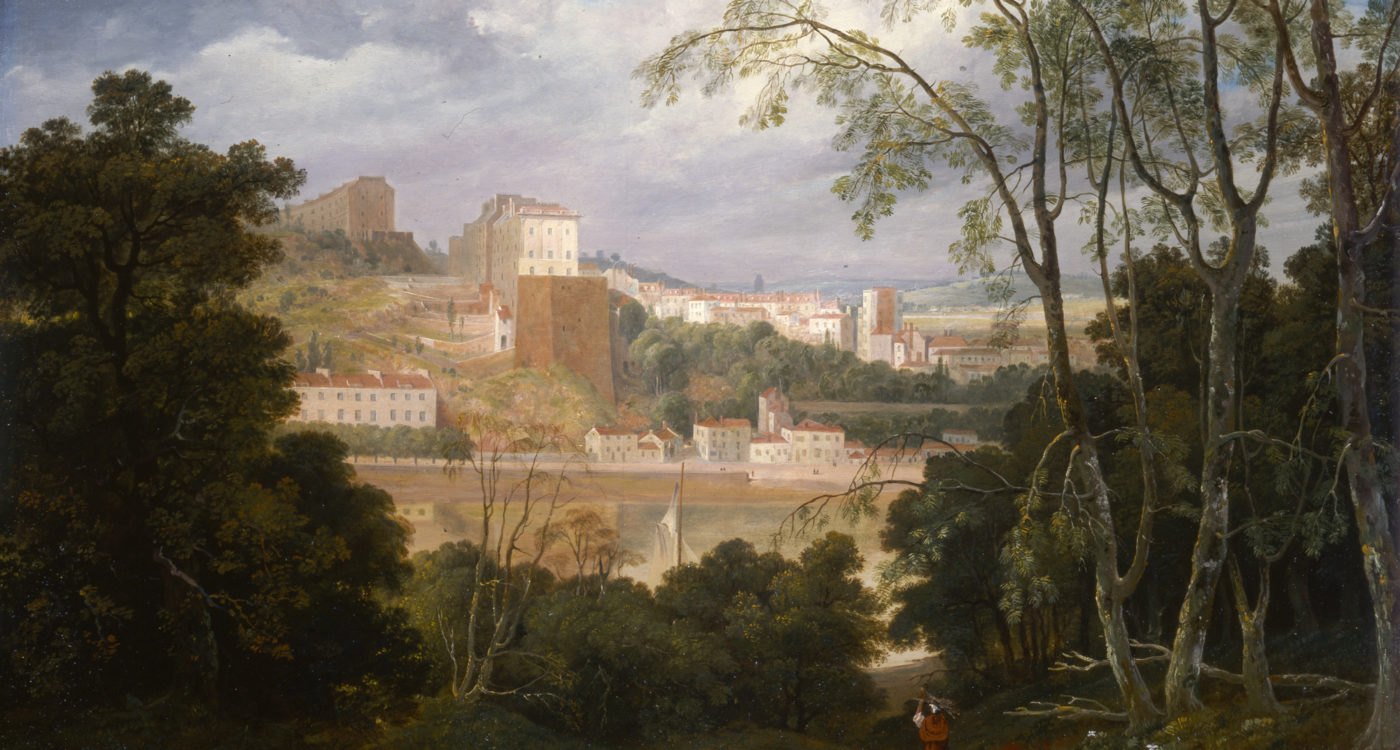
Francis Danby, View of Clifton from Leigh Woods, about 1818/20, oil on panel, K851
This view of Clifton, a wealthy area on the right bank of the Avon, is one of Danby’s first oil paintings. He initially became known in Bristol for his topographical watercolours, which were very popular with local middle class art lovers. From the opposite bank, the painter is eager to depict the elegant Georgian houses of Windsor Terrace. Above them is the imposing silhouette of the Paragon. The artist is playing with the contrast between the well-lit urban landscape and the dark expanse of Leigh Woods, which surrounds it like an oasis.
View full image.
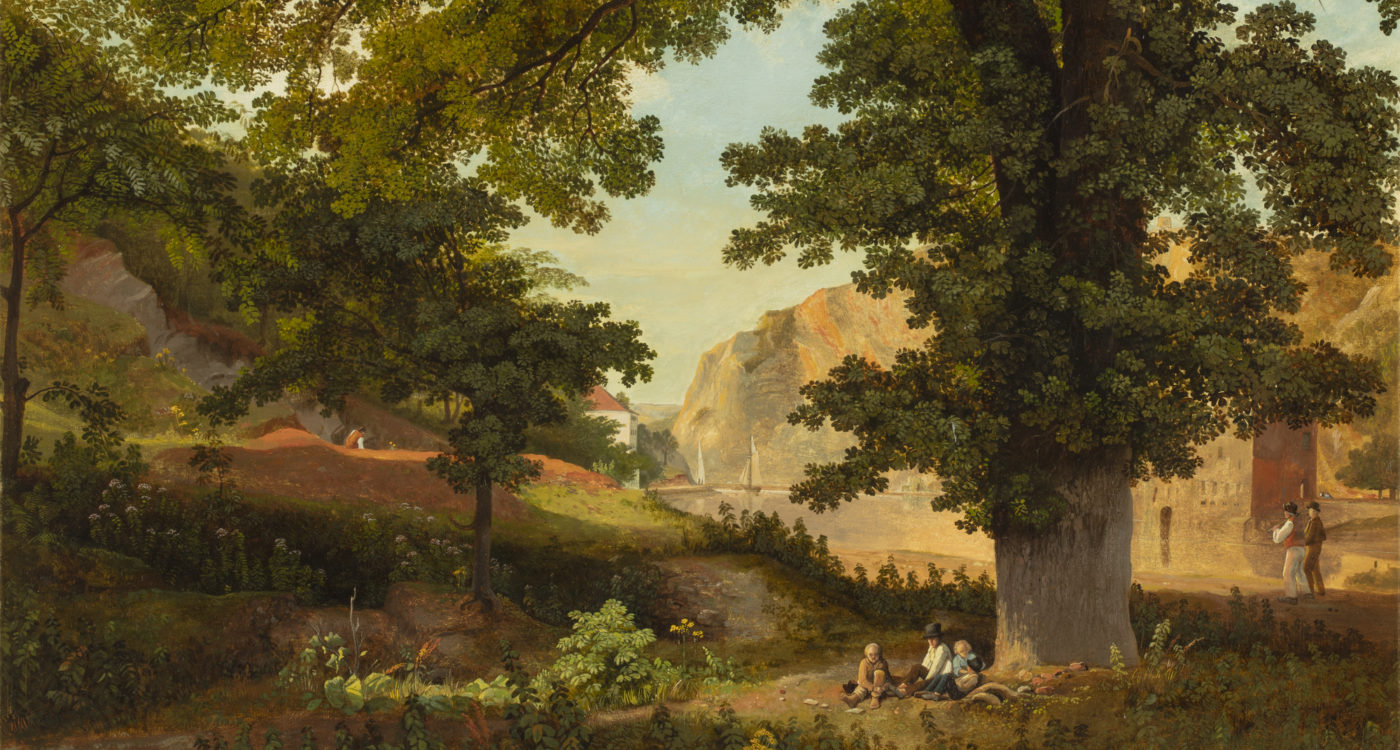
Francis Danby, Clifton Rocks from Rownham Fields, about 1821, oil on panel, K850 View full image.
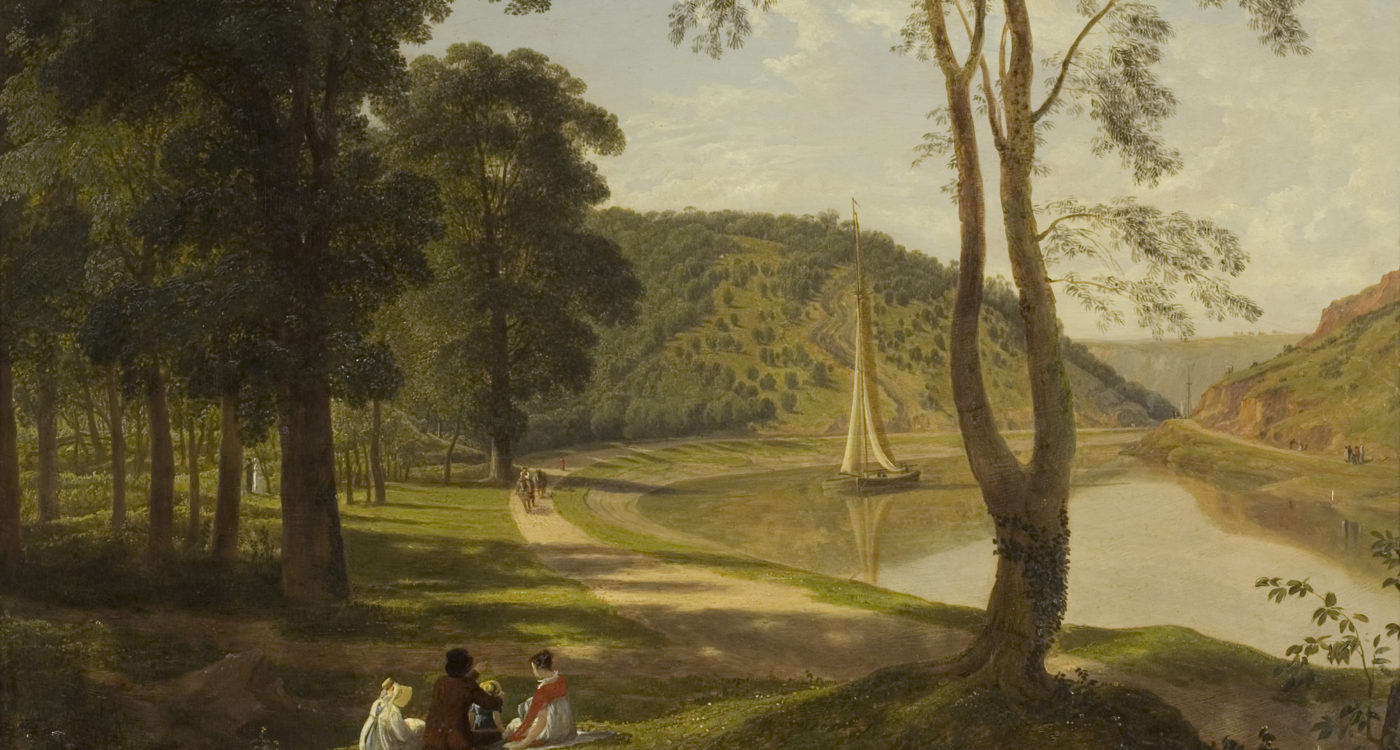
Francis Danby, View of the Avon Gorge, about 1822, oil on panel, K2655
Nightingale Valley and the wooded banks of the Avon were among the favourite destinations for artists and elegant society in Bristol, who would cross the river from the neighbouring districts of Clifton and Hotwells. A genuine haven of peace, away from the bustle of the city, this site was perfect for rural excursions along the tow path. Sitting on the grass, an elegantly dressed man and two women are enjoying a beautiful sunny day while a boat glides peacefully by on the water. View full image.
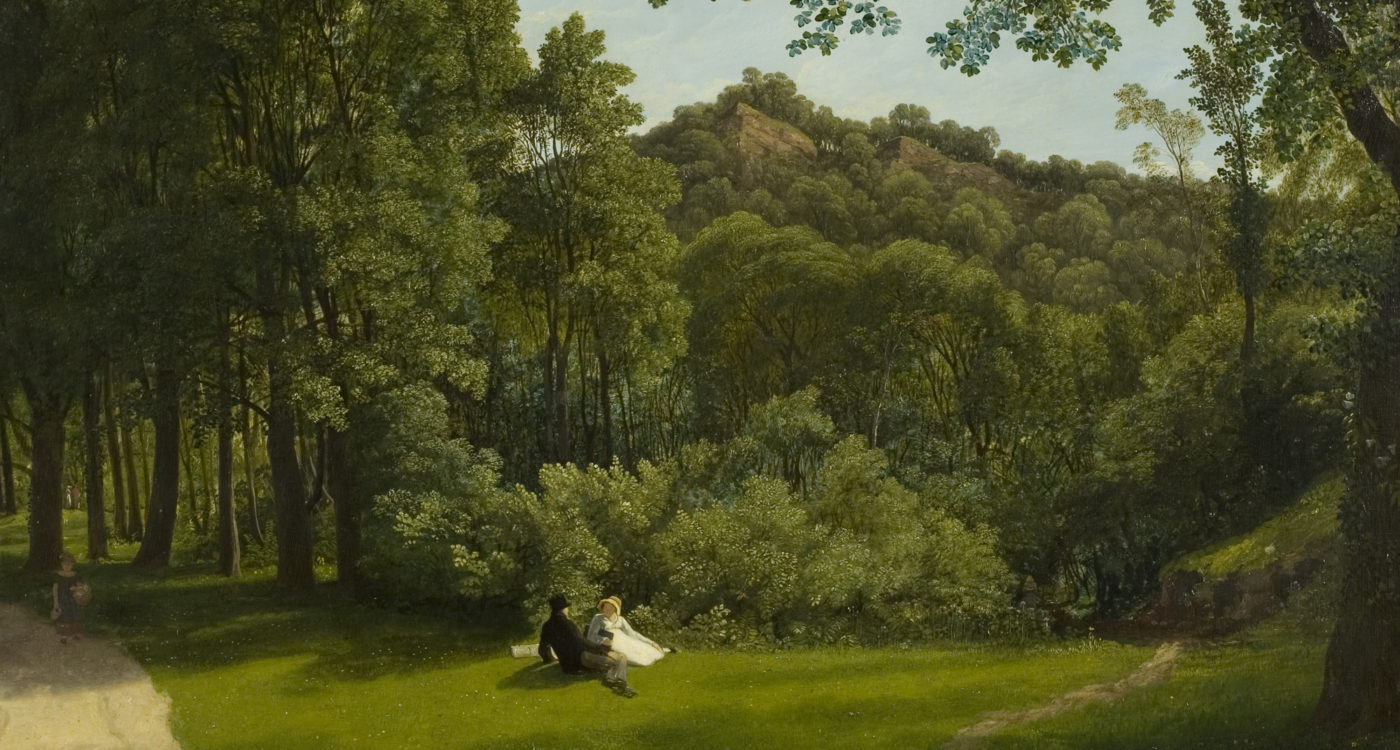
Francis Danby, A Scene in Leigh Woods, 1822, oil on panel, K2654
Like the View of the Avon Gorge, with which it forms a pair, this painting was probably commissioned by a wealthy local patron. Leigh Woods was one of the most popular local destinations for painting and leisure. It was accessed by crossing the river on the Rownham Ferry. Playing with a palette of harmonious greens, in this picture Danby is eager to depict the idyllic and romantic atmosphere of these magical woods. The intimate tranquillity of appears to delight the young couple. View full image.

Francis Danby, Boys Sailing a Little Boat, about 1822, oil on panel, K2391
Very different to the apocalyptic landscapes painted by Danby just two years later, this painting depicts innocent childhood play. Two young boys are absorbed in watching their little boat sailing on a stream, while three other children watch the scene from a bridge. The rustic basket of potatoes and the simplicity of the clothes show that they are from a modest background. Danby focuses on the intimacy of this moment and illuminates the secluded scene with a few splashes of colour. View full image.
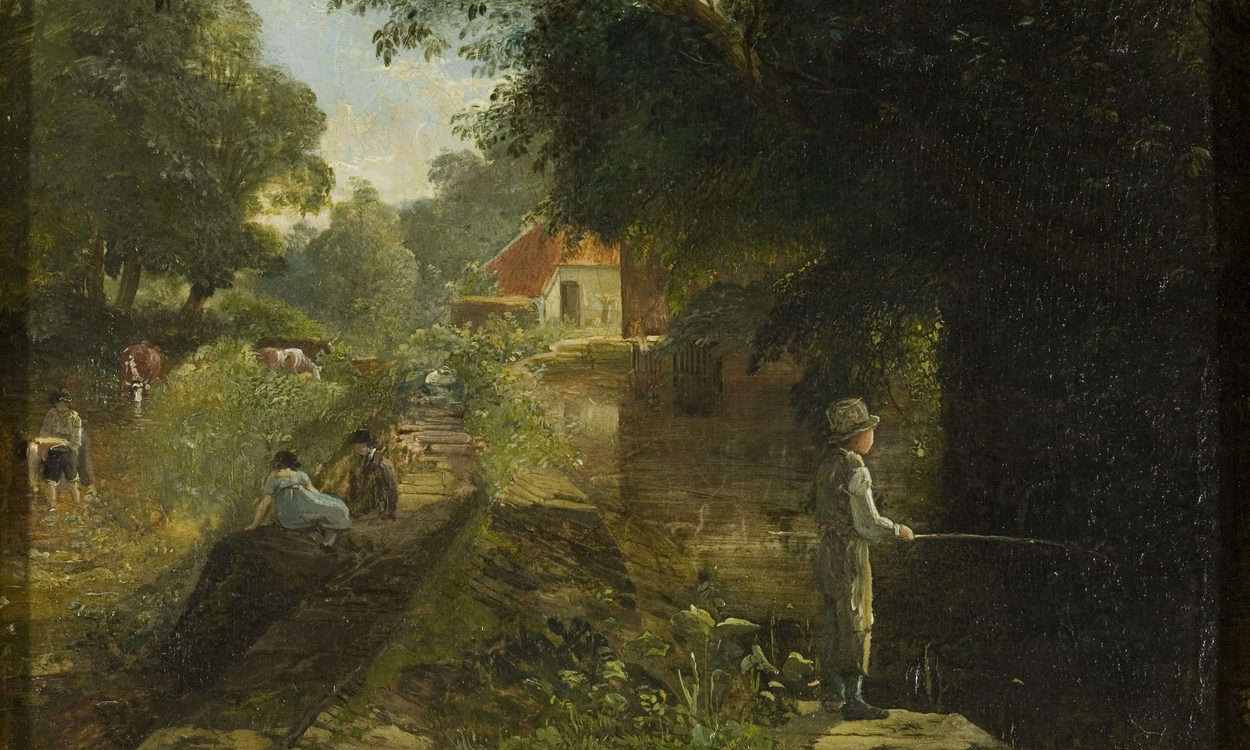
Francis Danby, Boy Fishing, Stapleton, about 1822/23, oil on card laid on panel, K853. View full image.

Francis Danby, River Scene with Weir and Mill, about 1823, oil on canvas, K2635. View full image.

James Johnson, Nightingale Valley, 1829, oil on panel, K6002. View full image.
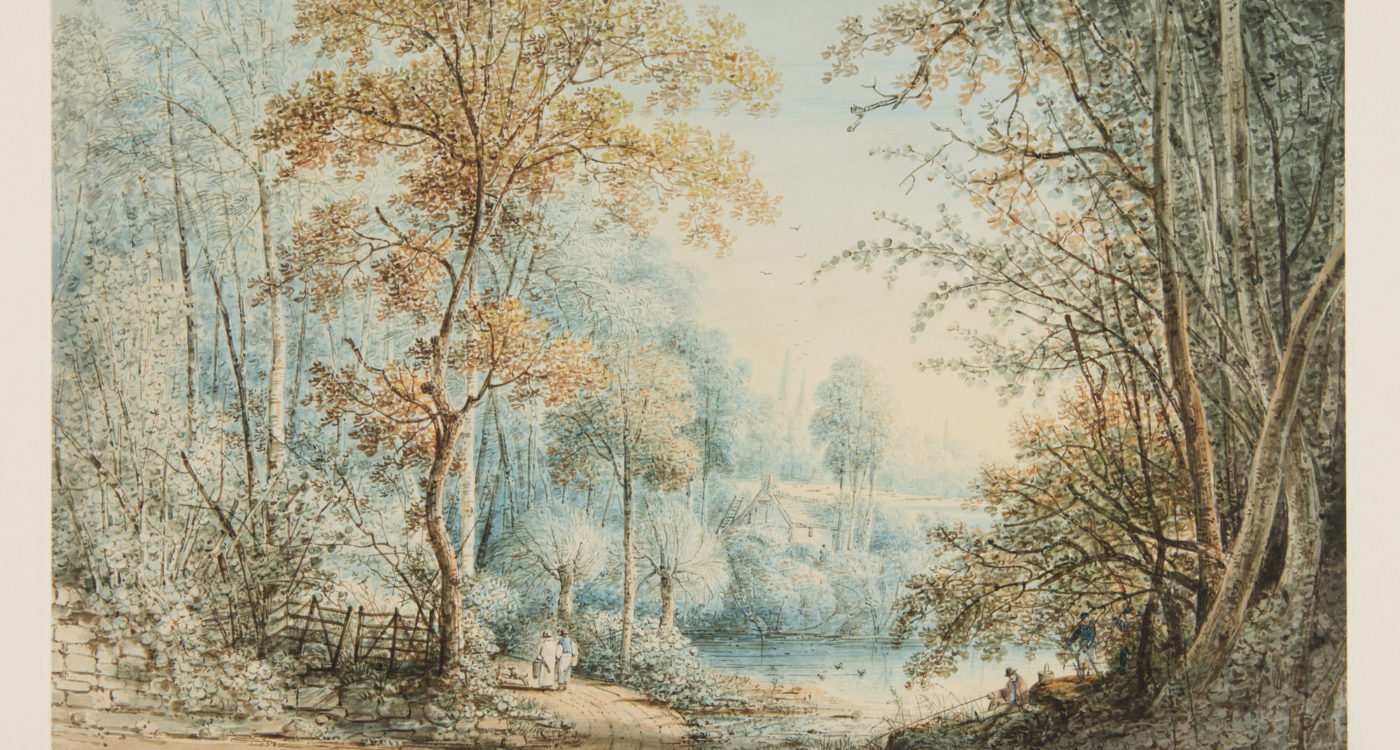
Samuel Colman, Nightingale Valley, Brislington, about 1835, watercolour, K5873. View full image.
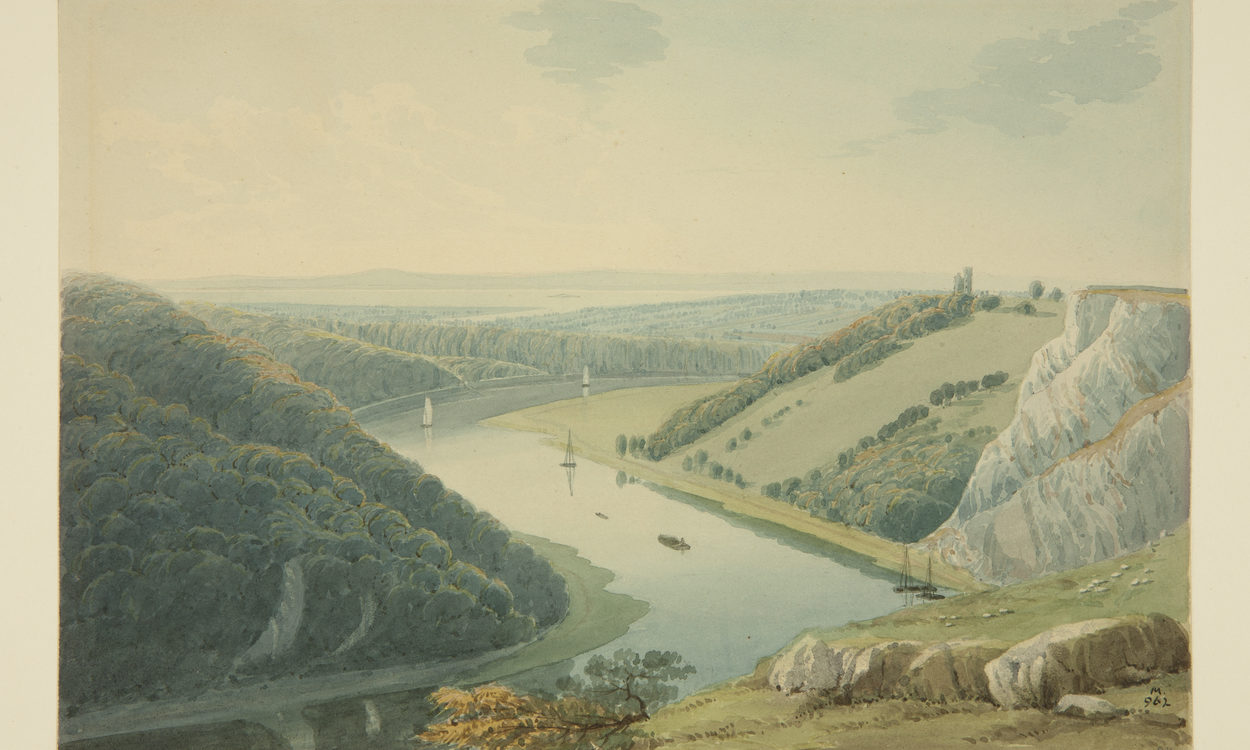
Samuel Jackson, The Avon From Clifton Down, Looking Towards the Severn, about 1825, watercolour, M962. View full image.
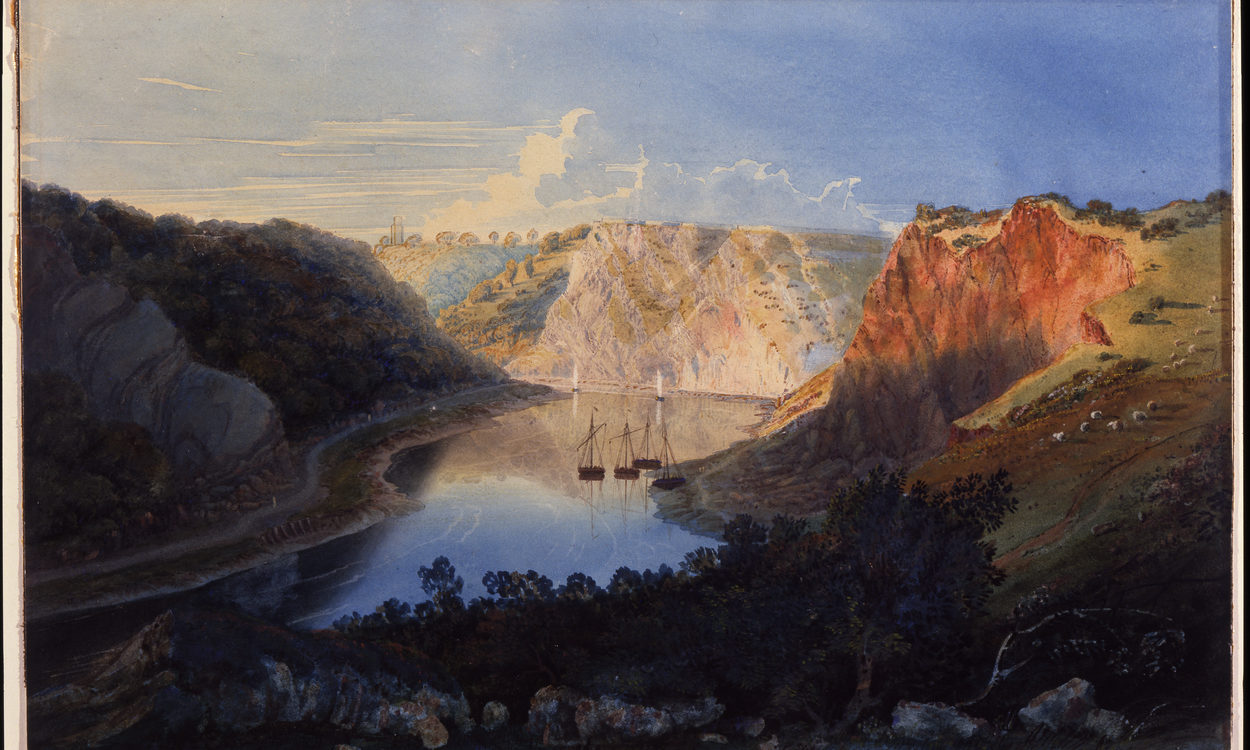
Samuel Jackson, The Avon Gorge at Sunset, about 1825, watercolour, K5051
Samuel Jackson was an important contributors to the topographical collection created by the collector George Weare Braikenridge. With more than 1000 drawings and watercolours depicting the landscapes and landmarks of Bristol, this collection makes Bristol one of the best documented English cities. The drawing forms part of a series of four large watercolours showing views of the Avon Gorge in different lights. The artist focuses his attention on the limestone cliffs and calm waters of the Avon illuminated by the rays of the setting sun. The foreground remains in the shade. View full image.
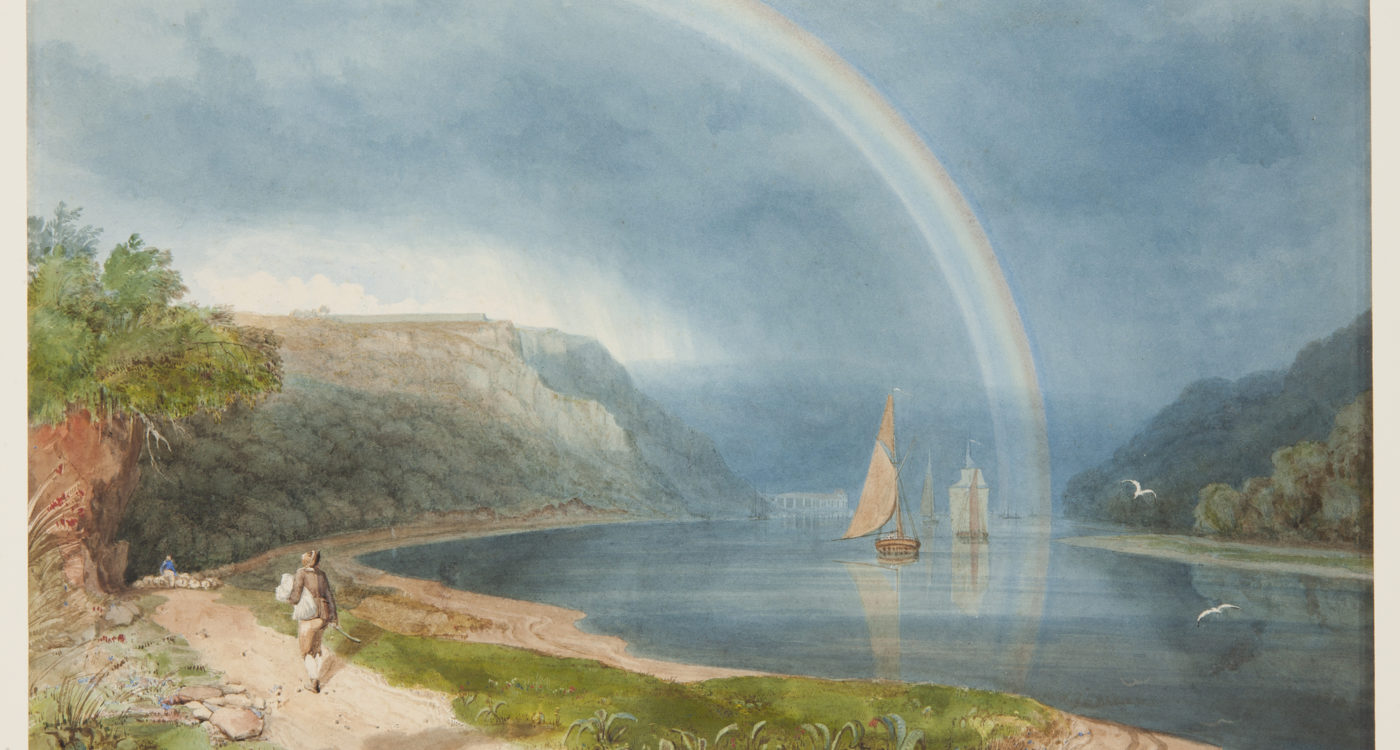
Samuel Jackson, Rainbow on the River Avon, about 1825, watercolour, K180
This watercolour belongs to the same series as the Avon Gorge at Sunset. The intense blue of the sky, crossed by a magnificent rainbow, reflects that of the calm water of the Avon. The river is barely disturbed by the sailing boats and birds flying above it. Jackson plays with the contrast between the rocky Sea Walls cliff and the gentle tow path leading towards the city and the aquatic aspect. Watercolour, a technique he has completely mastered, is used to create a successful combination of topographical realism and romantic sentiment. View full image.
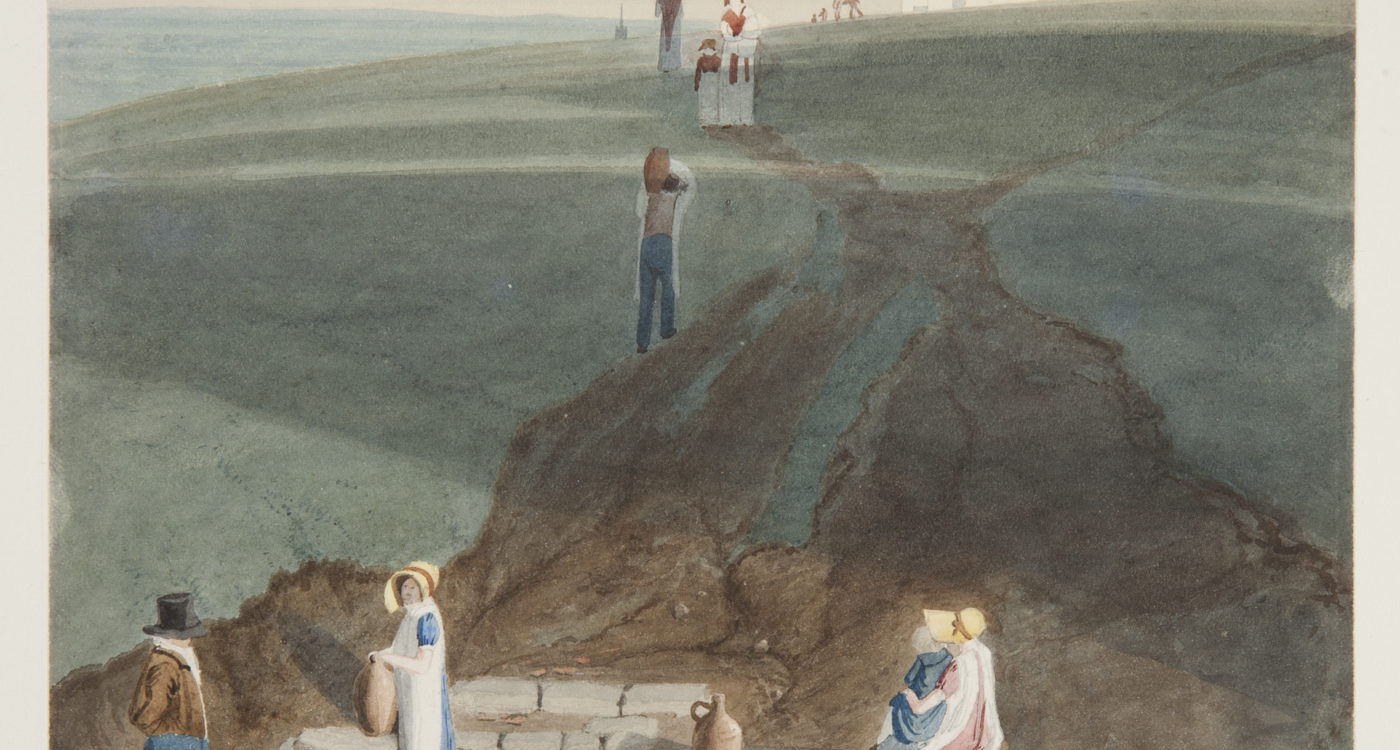
Samuel Jackson, Mother Pugsley’s Well, 1823, watercolour, M964
The legend of Mother Pugsley was well known to Bristolians in the 19th century. It refers to an episode from the siege of Bristol in 1645, when an officer by the name of Pugsley was killed and buried on this spot, watched over by his inconsolable widow. Located to the north-east of the historic city centre, the well attracted a large number of visitors. The choice of a vertical format, which is quite rare for this kind of picture, gives the scene a theatrical aspect. However, Jackson does not conceal the increasing urbanisation of Bristol at that time. In the background we see the white silhouette of new buildings on Somerset Street, in the Kingsdown district. View full image.
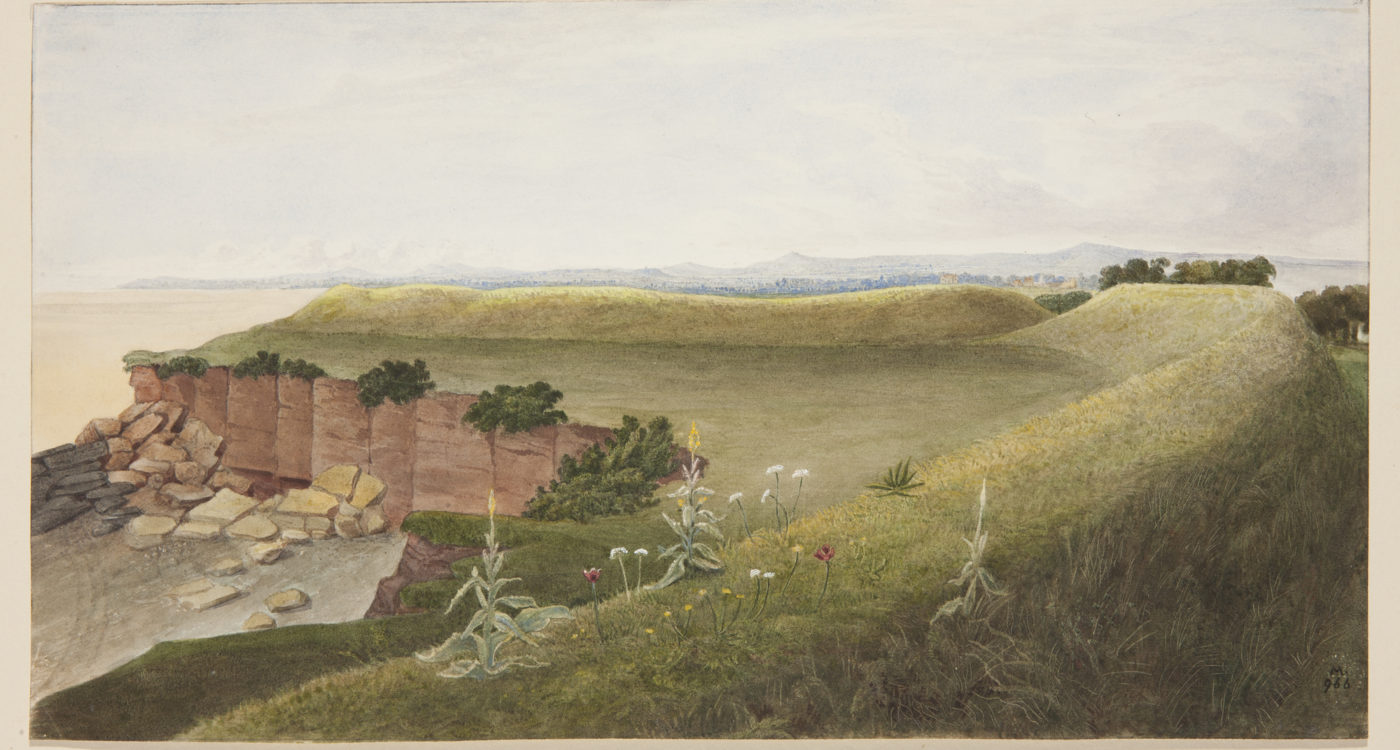
Samuel Jackson, View of Sudbrook Hill Fort, Portskewett, Monmouthshire, about 1820, watercolour, M966. View full image.
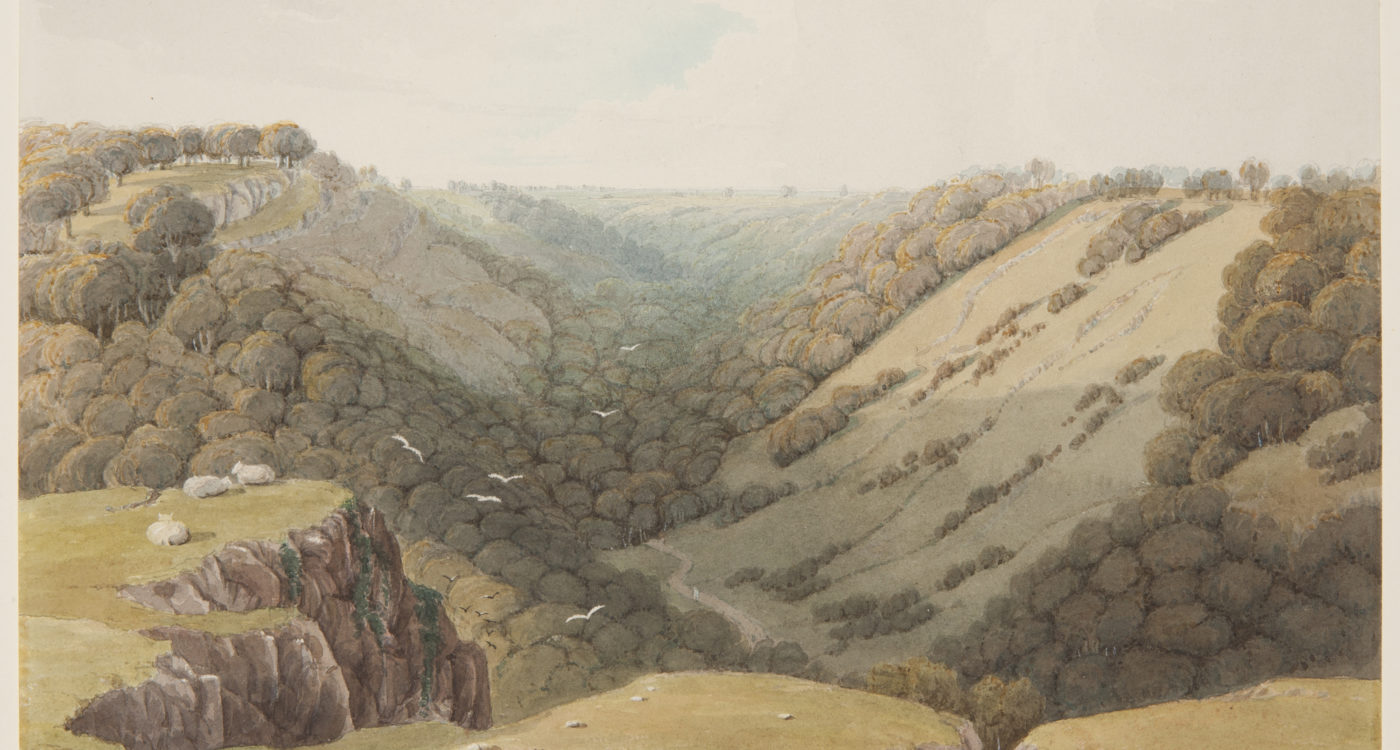
Samuel Jackson, View of Sudbrook Hill Fort, Portskewett, Monmouthshire, about 1820, watercolour, M966. View full image.
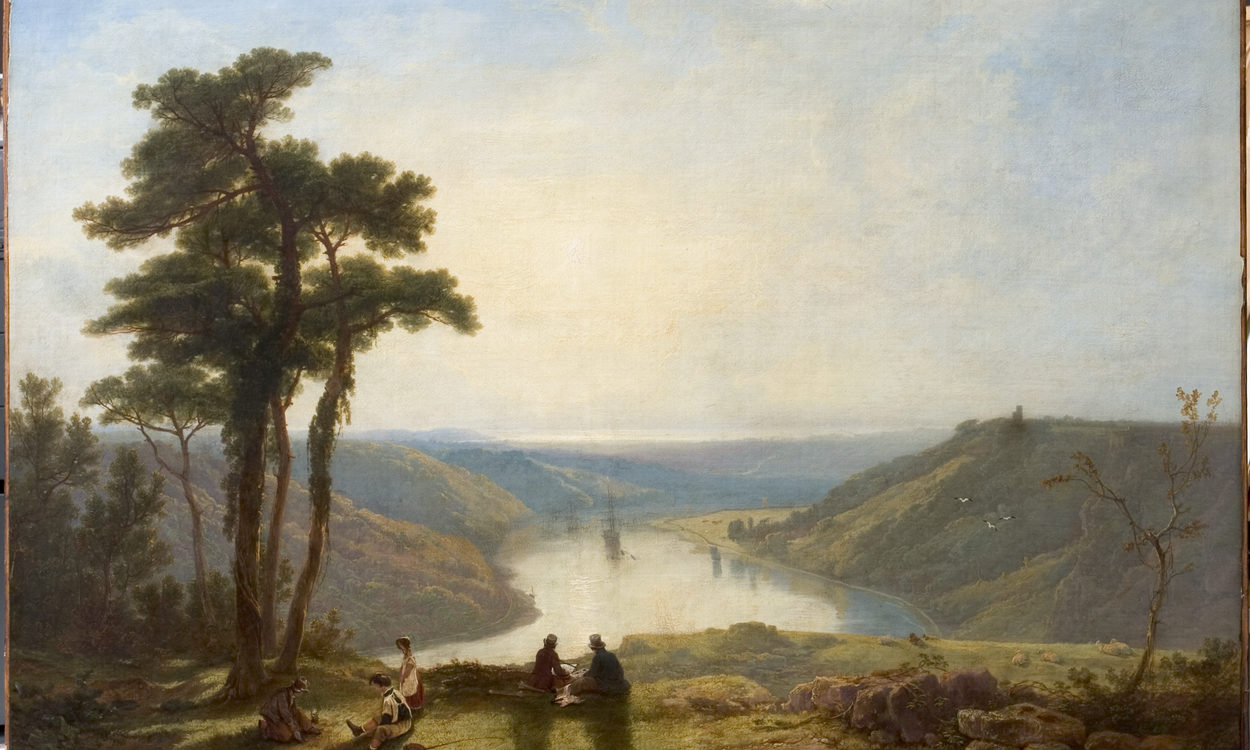
James Baker Pyne, View of the Avon from Durdham Down, 1829, oil on canvas, K585
Like many Bristol School artists, James Baker Pyne fell for the charm of this famous Bristol site. It had also been popular with Danby of whom the artist was a pupil. Unlike his tutor, Pyne adopts a position that is further west and incorporates imaginary trees into the actual landscape. Fascinated by atmospheric effects, he chooses the poetic light of a setting sun. It illuminates the calm waters of the Avon and the Severn estuary in the distance. The scene is observed by the two artists in the foreground. View full image.
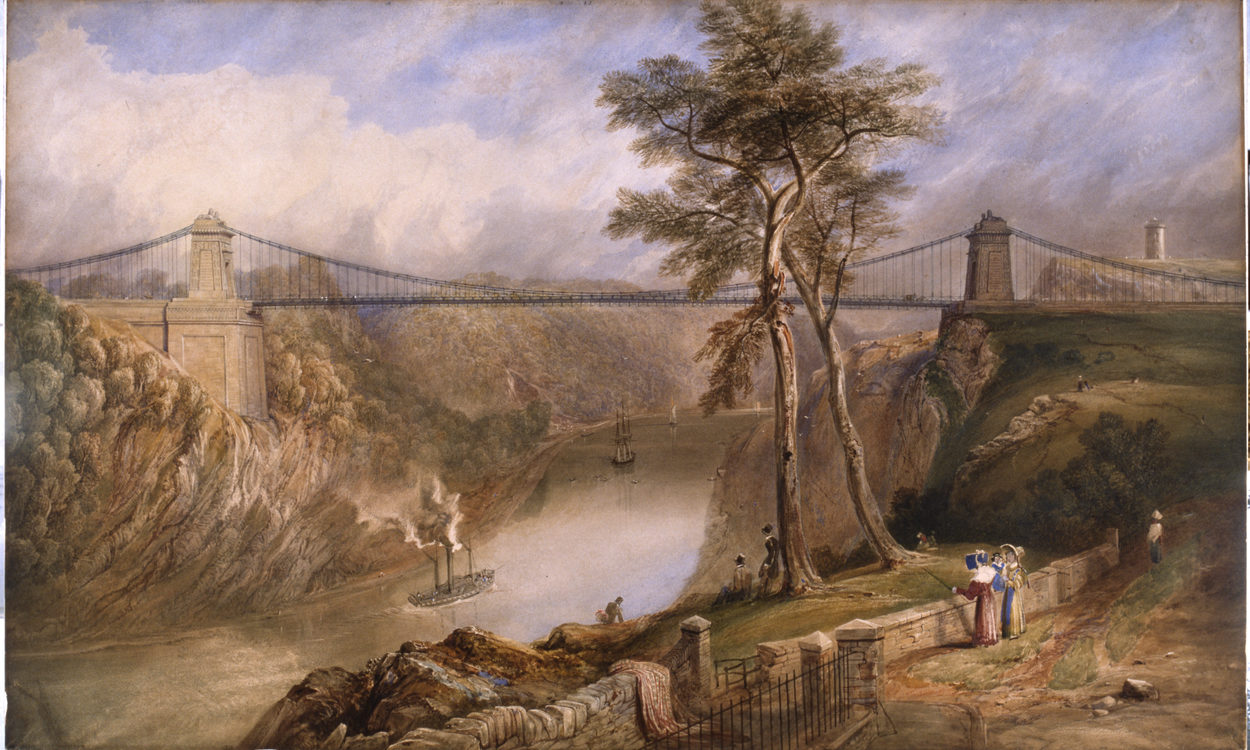
Samuel Jackson, View on the Avon at Hotwells: The Proposed Suspension Bridge, 1831, watercolour, K4077
In 1829 the city of Bristol held a competition for the construction of a bridge between Clifton and Leigh Woods. Overseen by the engineer Isambard Kingdom Brunel, work was carried out between 1839 and 1864. Spanning the River Avon at the bottom of the gorge, the bridge appears in the background, flanked by its two fashionable Egyptian style towers. Boats – including the Rownham Ferry – and figures populate the composition and add a picturesque local and colourful aspect. To this day, the Clifton Suspension Bridge is one of the symbols of Bristol. View full image.
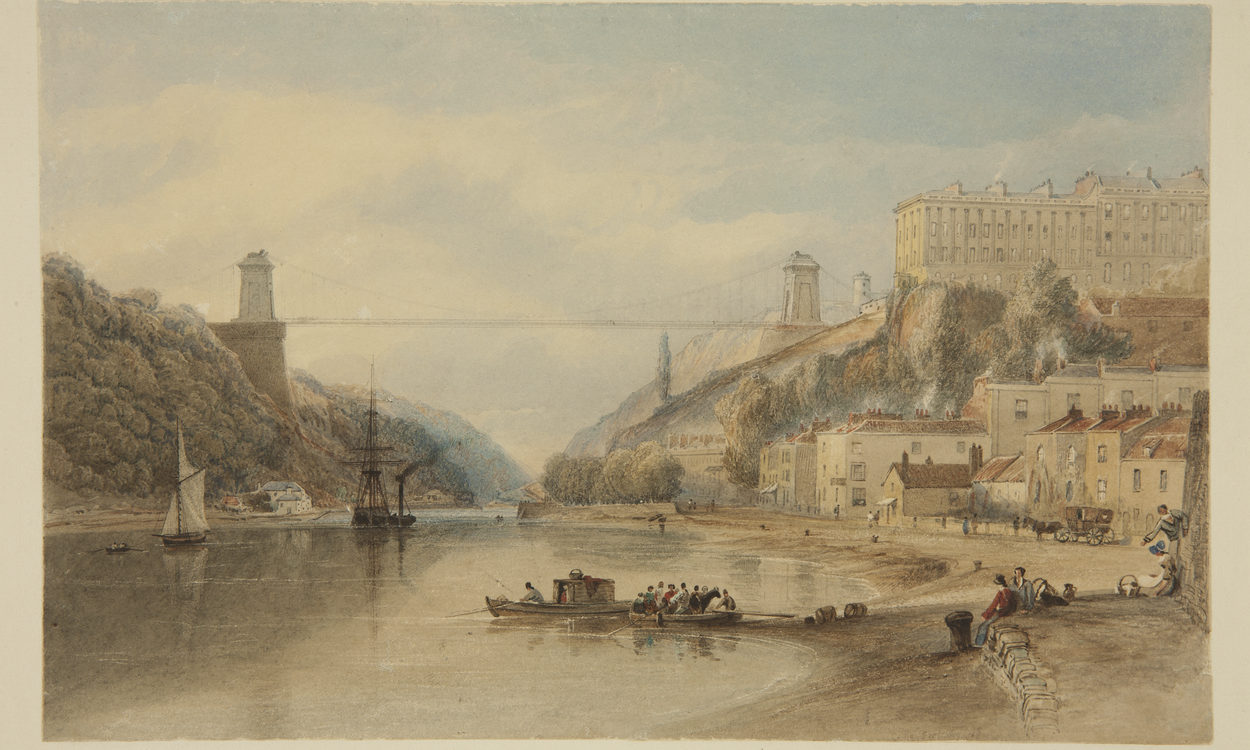
Samuel Jackson, View on the Avon at Hotwells: The Proposed Suspension Bridge, about 1836, watercolour, K1374. View full image.
